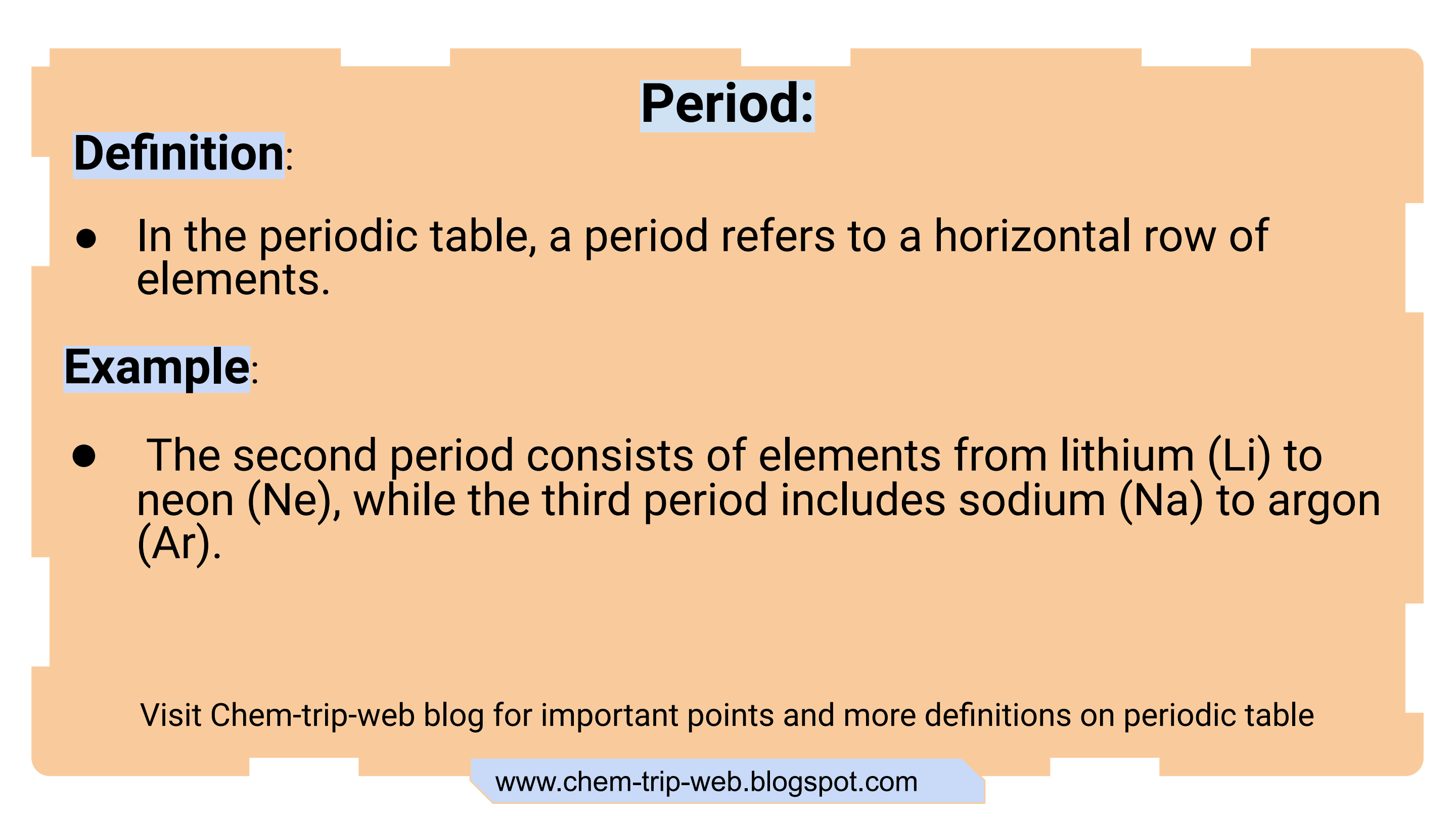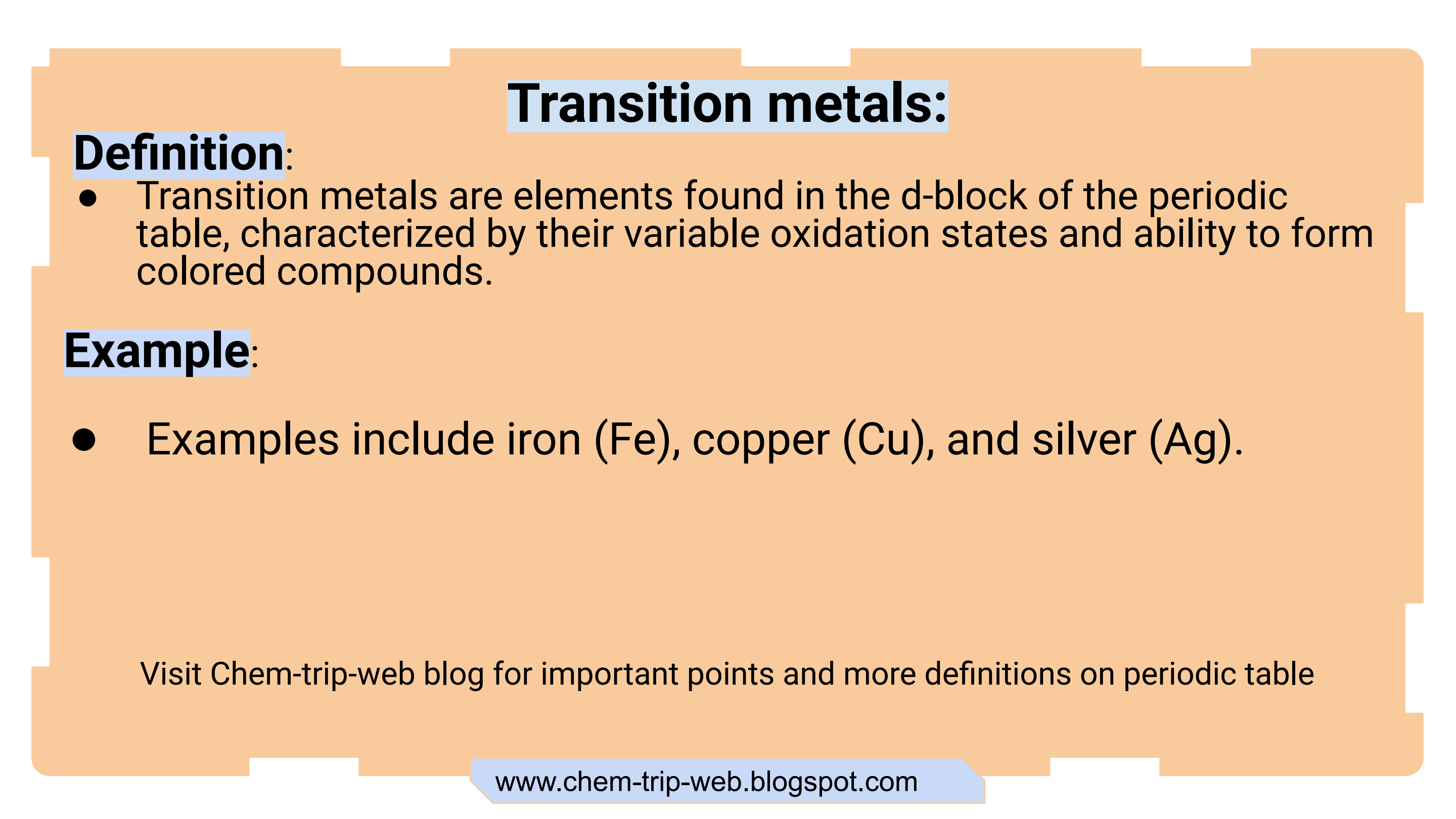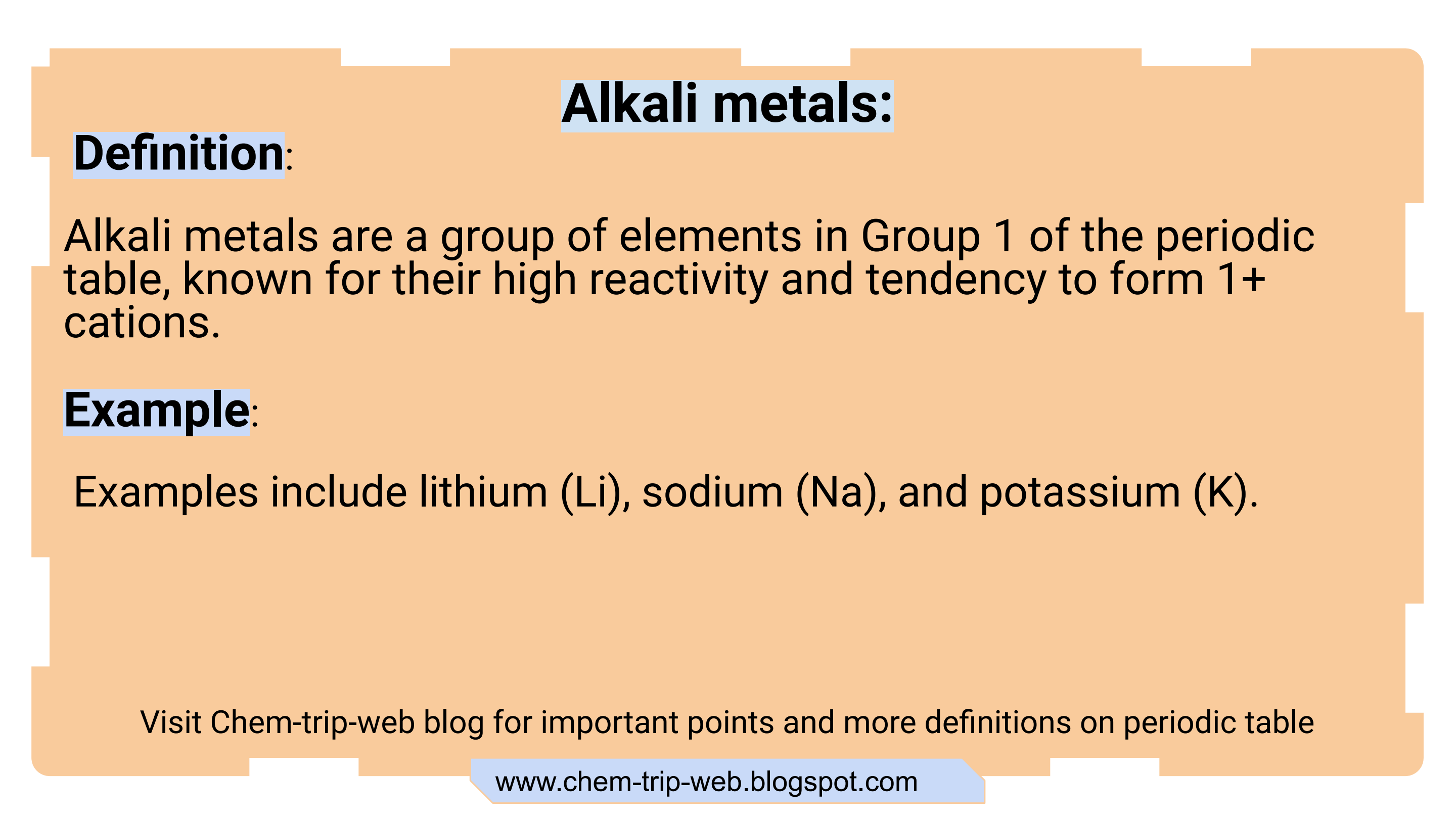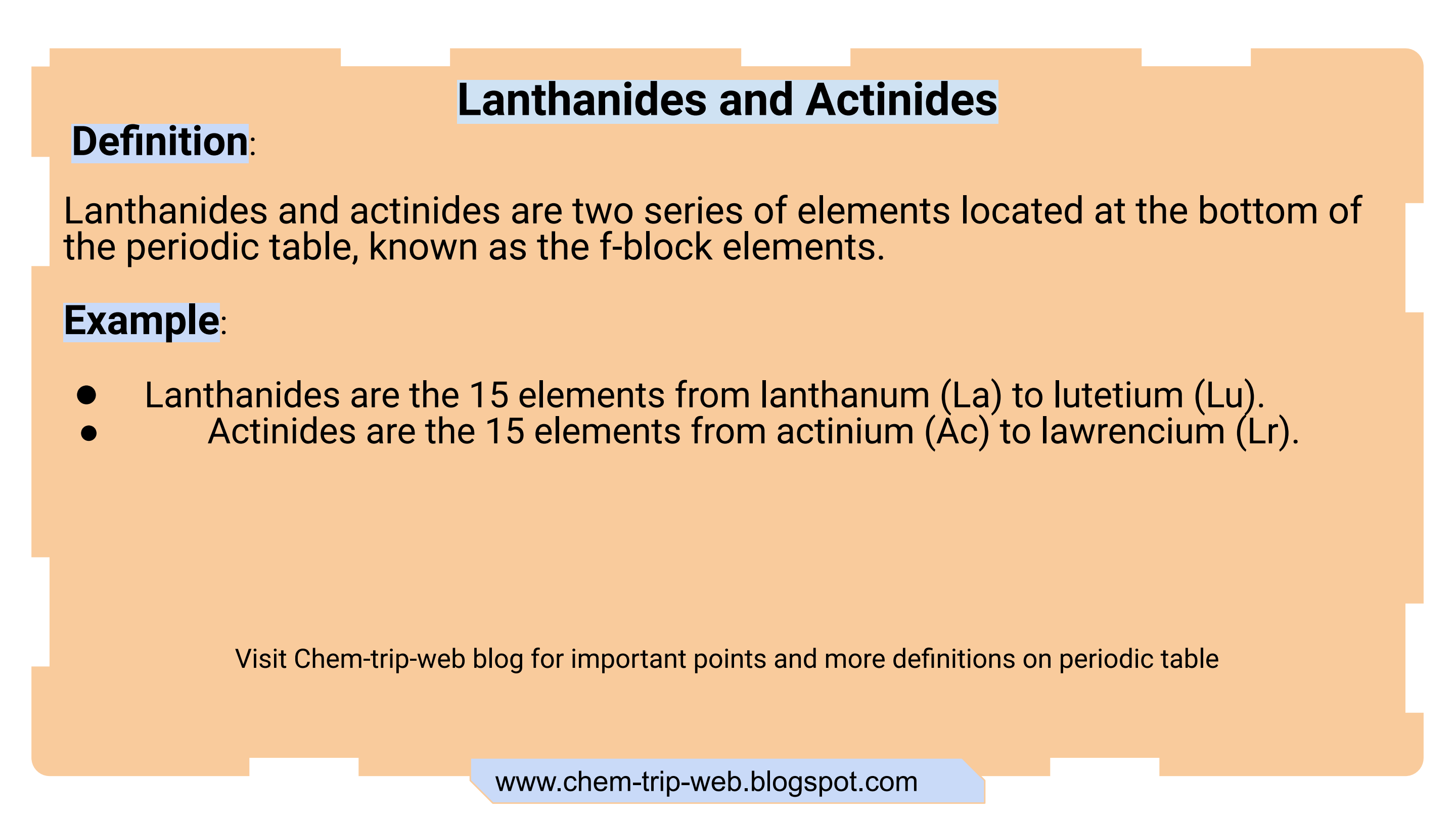The Periodic Table: A important points of Atomic Numbers, Valence Electrons, and Periodic Trends
Important points of Atomic Numbers, Valence Electrons, and Periodic Trends
Periodic Table:
Definition:
The periodic table is a tabular arrangement of chemical elements, organized based on their atomic number, electron configuration, and recurring chemical properties.
Points:
The periodic table provides a systematic way of organizing and classifying elements.
It consists of rows called periods and columns called groups.
Elements within the same group exhibit similar chemical properties and valence electron configurations.
The periodic table helps in predicting the properties of unknown or undiscovered elements.
Examples include the Mendeleev periodic table and the modern periodic table.
Atomic Number:
Definition:
The atomic number of an element represents the number of protons in the nucleus of an atom.
Points:
The atomic number determines an element's position in the periodic table.
Elements are arranged in ascending order of atomic number.
Atomic number uniquely identifies each element.
Examples: Hydrogen has an atomic number of 1, helium has an atomic number of 2, and oxygen has an atomic number of 8.
Period:
Definition:
In the periodic table, a period refers to a horizontal row of elements.
Points:
Each period represents a different principal energy level or shell.
Periods are numbered from 1 to 7.
Elements within the same period of the periodic table possess an identical number of electron shells. This characteristic is a defining feature of elements arranged in a particular row of the periodic table.
Examples: The second period consists of elements from lithium (Li) to neon (Ne), while the third period includes sodium (Na) to argon (Ar).
Group:
Definition:
In the periodic table, a group refers to a vertical column of elements.
Points:
Elements within the same group share similar chemical properties.
Groups are numbered from 1 to 18 or labeled with the numbers 1 to 2 and the letters A to B.
Elements in the same group have the same number of valence electrons.
Examples: Group 1 elements are known as alkali metals, including lithium, sodium, and potassium.
Valence Electrons:
Definition:
Valence electrons are the electrons in the outermost energy level of an atom that participate in chemical bonding.
Points:
Valence electrons determine the reactivity and chemical behavior of an element.
For main group elements, the number of valence electrons corresponds to the group number they belong to.
Valence electrons are involved in the formation of chemical bonds.
Examples: Carbon has 4 valence electrons, while oxygen has 6 valence electrons.
Periodic Trends:
Definition:
Periodic trends refer to the patterns or variations in properties of elements across periods and groups in the periodic table.
Points:
Examples of periodic trends include atomic radius, ionization energy, electronegativity, and metallic character.
Atomic radius generally decreases from left to right across a period and increases down a group.
Ionization energy generally increases from left to right across a period and decreases down a group.
Electronegativity tends to increase from left to right across a period and decrease down a group.
Noble Gases:
Definition:
Noble gases are a group of elements in Group 18 of the periodic table with full outer electron shells.
Points:
Noble gases are chemically inert and have low reactivity.
They have a stable electron configuration, making them highly stable.
Examples include helium (He), neon (Ne), argon (Ar), and xenon (Xe).
Transition Metals:
Definition:
Transition metals are elements found in the d-block of the periodic table, characterized by their variable oxidation states and ability to form colored compounds.
Points:
Transition metals have partially filled d orbitals.
Transition metals are good conductors of electricity and heat.
Transition metals exhibit a wide range of chemical and physical properties.
Examples include iron (Fe), copper (Cu), and silver (Ag).
Alkali Metals:
Definition:
Alkali metals are a group of elements in Group 1 of the periodic table, known for their high reactivity and tendency to form 1+ cations.
Points:
Alkali metals have low density and low melting points.
They readily lose their valence electrons to form positive ions.
Alkali metals react vigorously with water and oxygen.
Examples include lithium (Li), sodium (Na), and potassium (K).
Halogens:
Definition:
Halogens are a group of elements in Group 17 of the periodic table, known for their high reactivity and tendency to form 1 anion.
Points:
Halogens readily gain one electron to achieve a stable electron configuration.
They exist in various forms, including diatomic molecules.
Halogens have high electronegativity and are strong oxidizing agents.
Examples include fluorine (F), chlorine (Cl), and iodine (I).
Metalloids:
Definition:
Metalloids are elements found along the stair-step line in the periodic table, exhibiting properties of both metals and nonmetals.
Points:
Metalloids have intermediate properties between metals and nonmetals.
They possess characteristics such as semi-conductivity and varying degrees of metallic luster.
Examples of metalloids include silicon (Si), germanium (Ge), and arsenic (As).
Lanthanides and Actinides:
Definition:
Lanthanides and actinides are two series of elements located at the bottom of the periodic table, known as the f-block elements.
Points:
Lanthanides are the 15 elements from lanthanum (La) to lutetium (Lu).
Actinides are the 15 elements from actinium (Ac) to lawrencium (Lr).
Lanthanides and actinides are also referred to as rare earth elements and are often used in various technologies
Note: The post has been generated with help of Tools and software assistant and after that it edited and proofread.












Comments
Post a Comment